Special machine and plant construction for a wide range of requirements is the core competence of SIEBTECHNIK. At bauma 2016, Messe.TV has technical managing director Jürg Pollmanns show and explain a circular vibratory screening machine and a setting machine.
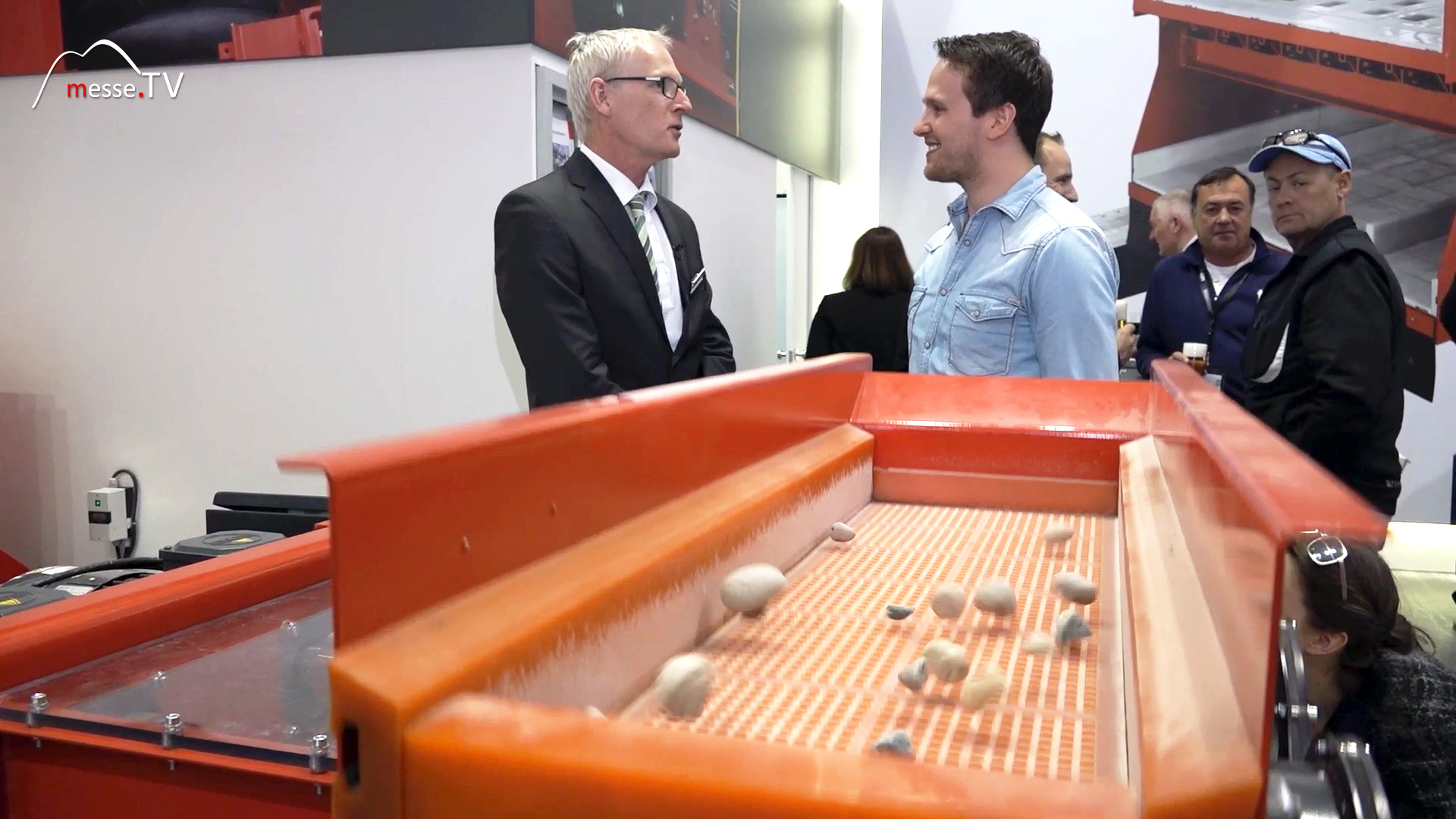
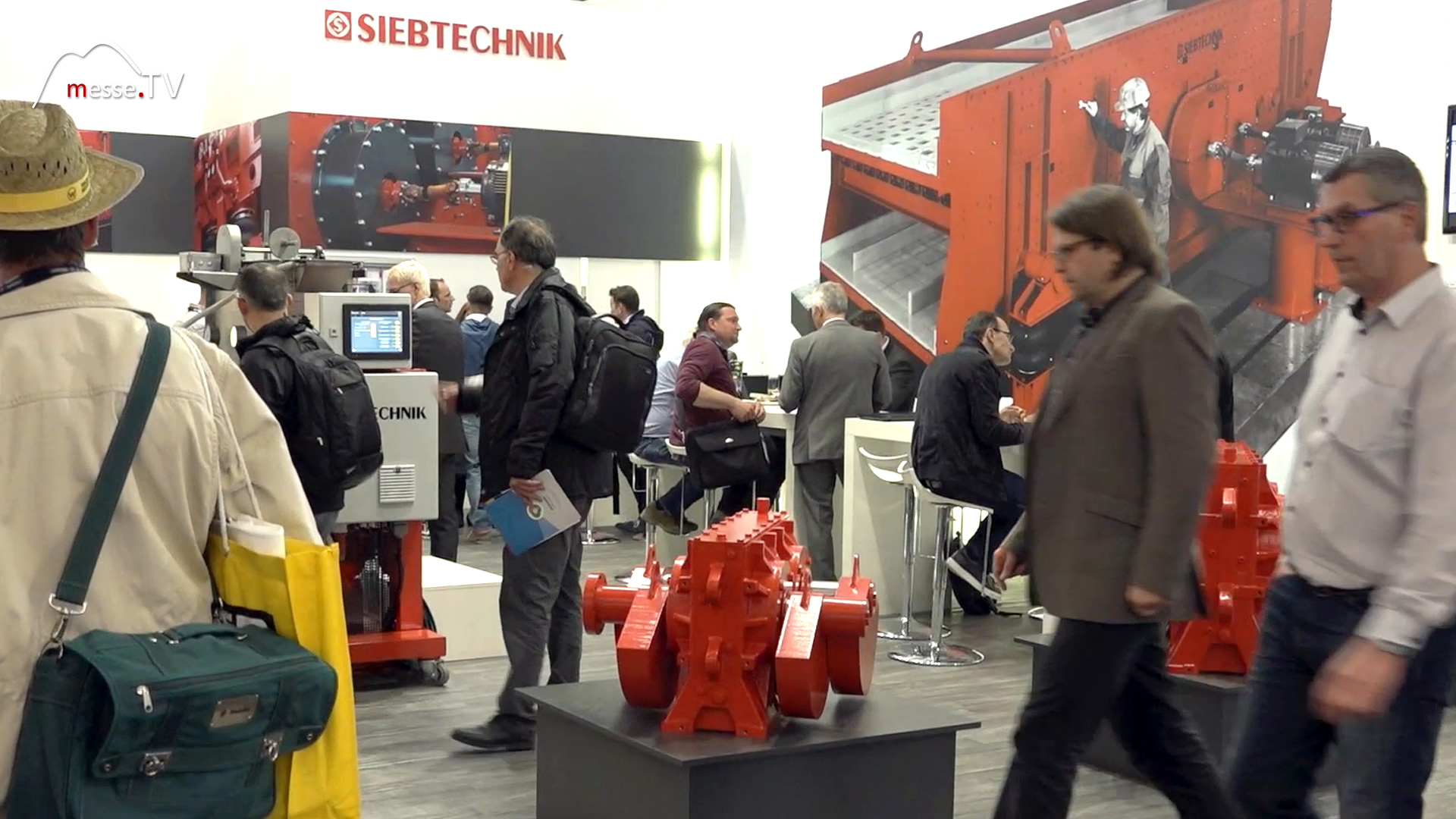
Felix Rother: Mr. Pollmanns, Siebtechnik probably does more than just fine sand, right? Jürg Pollmanns: Siebtechnik doesn't make fine sand at all, but Siebtechnik offers machines that can be used successfully in the sand and gravel industry, among other things. Among other things, they also produce sand, yes. Felix Rother: So what does that look like now? We now have here - let me put it simply - a vibrating machine that sifts things out. Jürg Pollmanns: That's not a bad way of putting it, because the principle of vibration is necessary for the machine to be able to convey, circulate the material and ultimately separate it according to grain size in a continuous process. Felix Rother: In other words - I'm familiar with this system from my normal household sieve at home - but what is so special about this machine? There is a reason why it runs by machine and not by hand. Jürg Pollmanns: Yes, well, mechanical means of course that you can achieve high turnovers - several hundred tons per hour. Of course not on such a small machine - this is a laboratory and model machine.
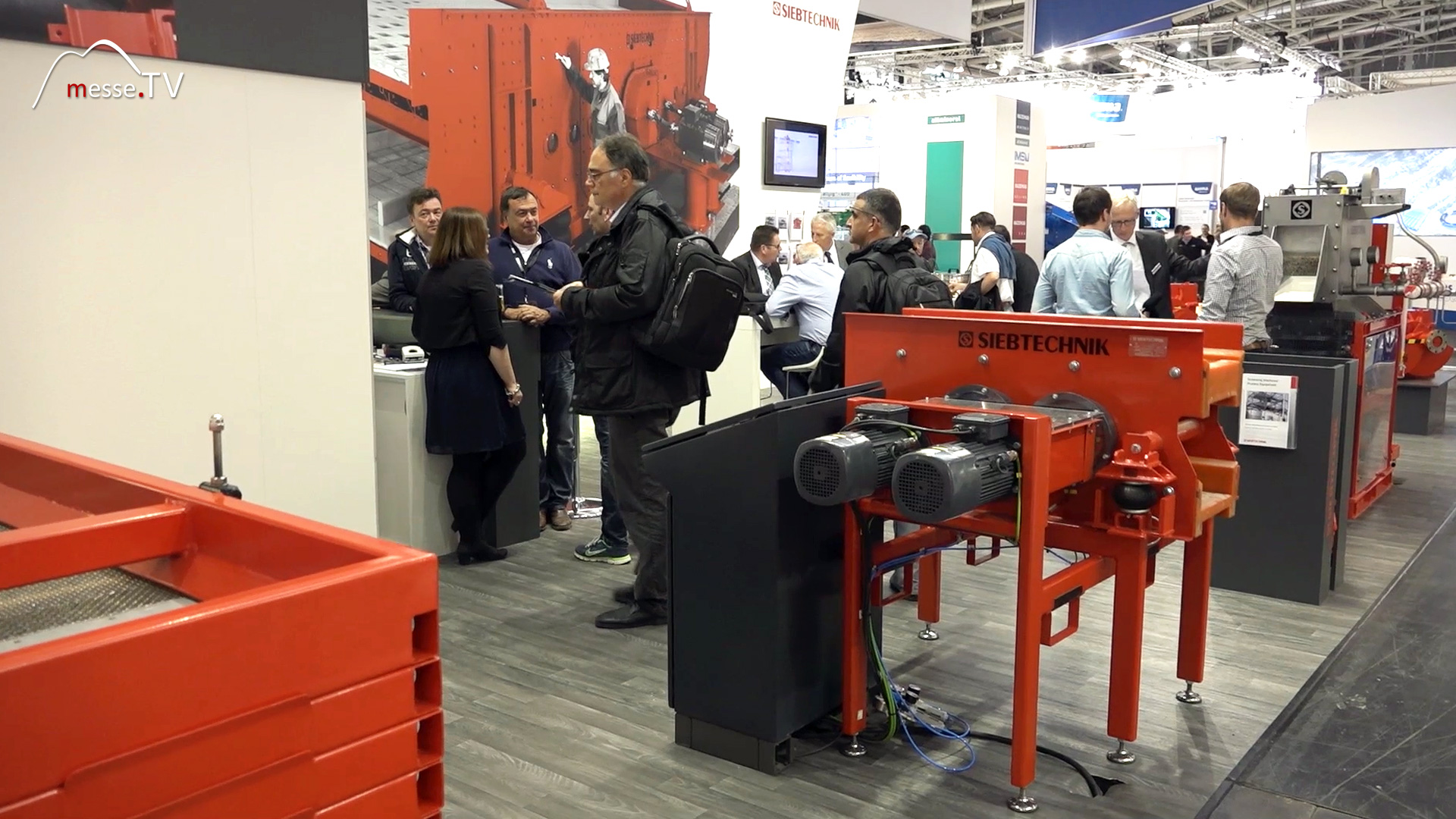
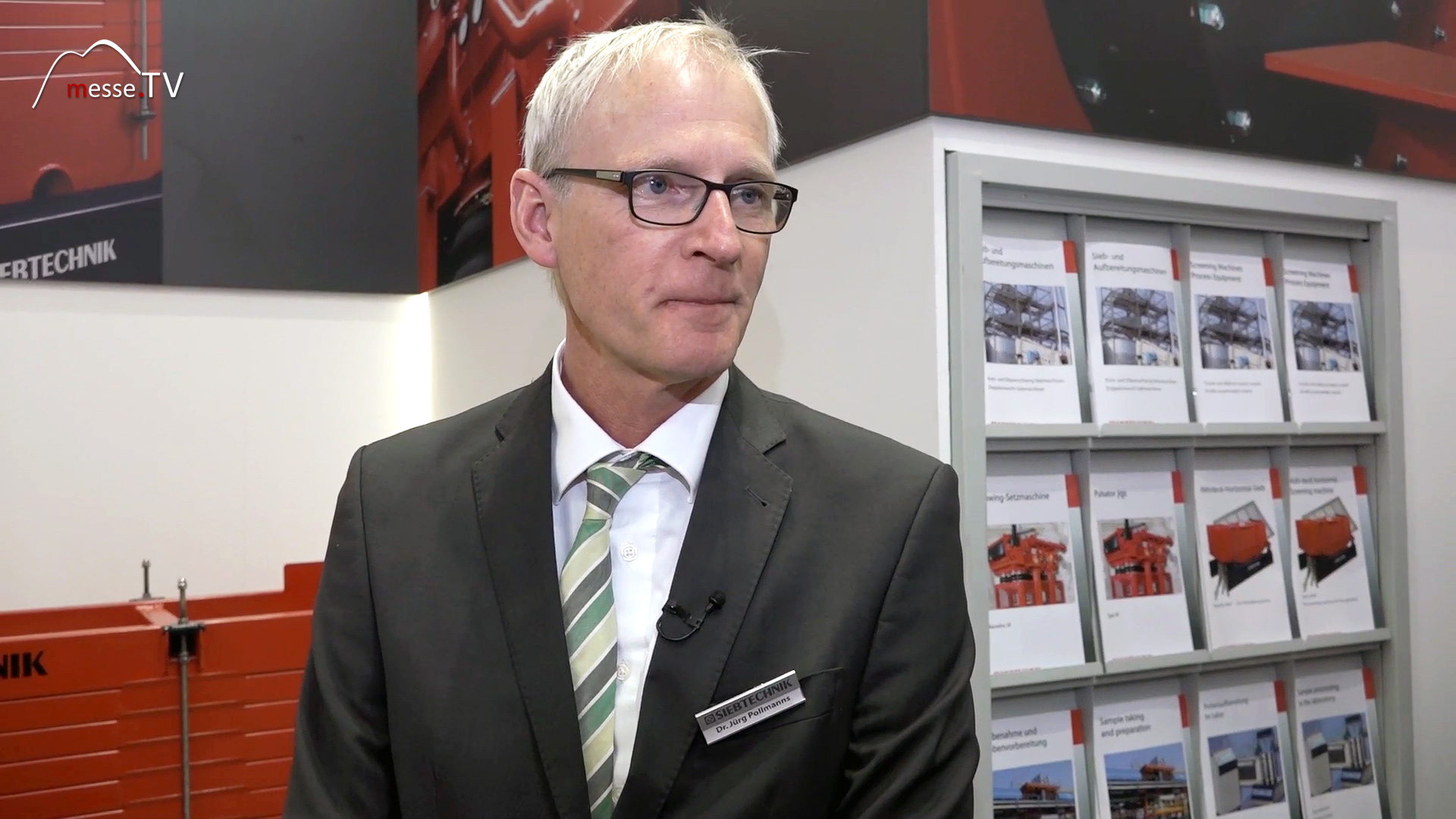
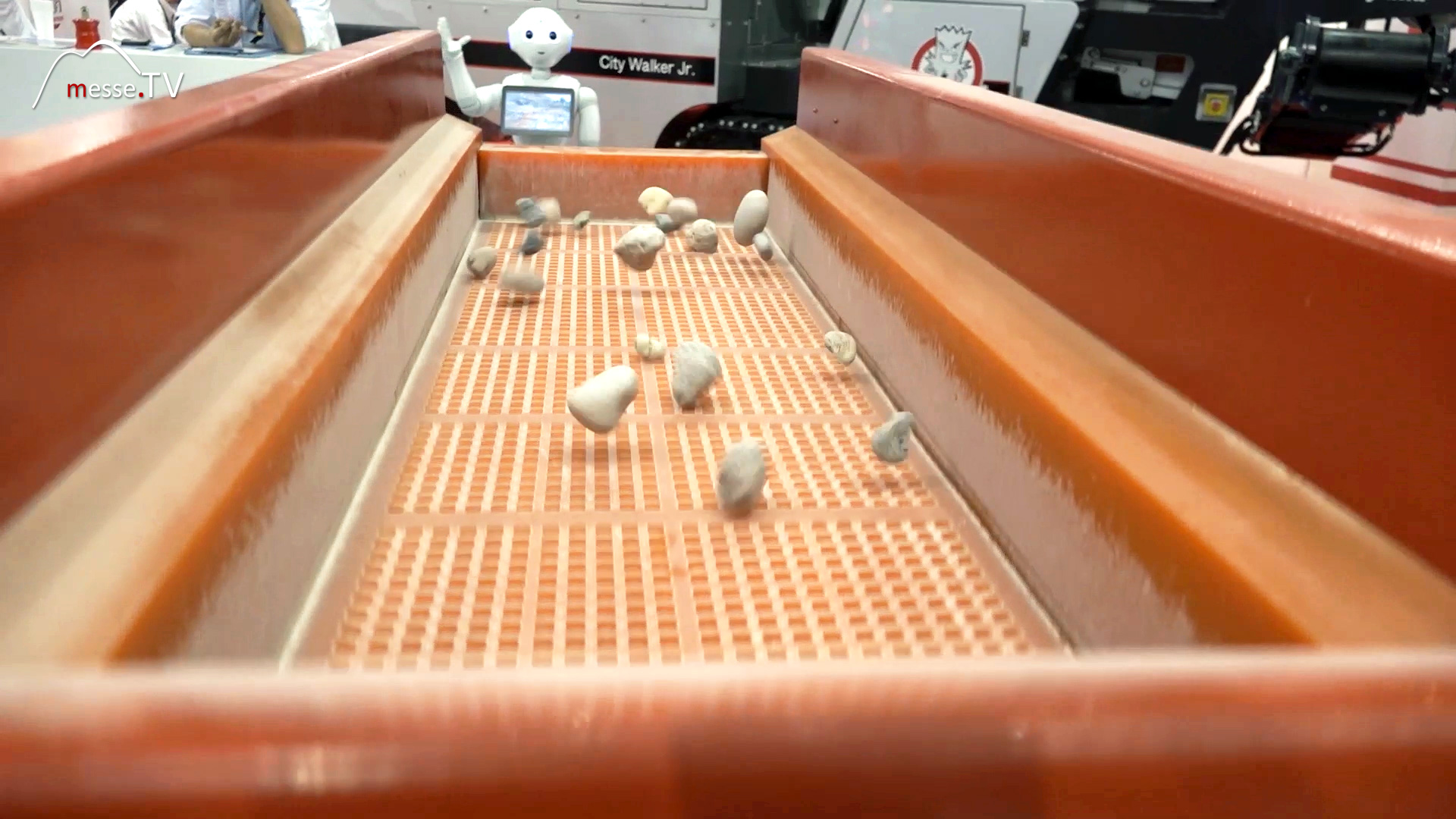
Felix Rother: We also have a large one here - is that what it looks like in reality? Jürg Pollmanns: It could look like this in reality, or bigger. Yes, the machine you see here is 2.40 meters wide and 8 meters long. But it could be even bigger. Felix Rother: But in principle it works just like this one. Jürg Pollmanns: That's exactly how it is. Felix Rother: What can this machine do that other machines can't? Jürg Pollmanns: Yes, it can adjust itself to the desired material in terms of process technology. That means I can influence the process technology by tilting the oscillation angle of the ellipse. I can demonstrate that for you. You can see that the material is now at the other end. Now I'm going to do something that doesn't really make sense, I'm just going to let it run backwards - just to make the principle clear. So you can see... (Mr. Pollmann switches the machine to reverse and the stones in the sieve change direction from one end of the sieve to the other) Felix Rother: That's also quite fast. Jürg Pollmanns: That's coming at you fast. Of course, this is an action that nobody does in a normal operation, but I have a conveying direction where the material should go. Felix Rother: Why do I have these different angles of inclination? Jürg Pollmanns: We have customers who have different crushers, these crushers throw out different grain, but the screening must be the same, which means that the electronic screening machine is linked to the crusher via the control system and the same product always comes out. Felix Rother: But this is probably not the only machine you have, you also have other machines. What else can Siebtechnik do? Jürg Pollmanns: Well, what Siebtechnik can also do, for example, is build jigging machines - we have a model here.
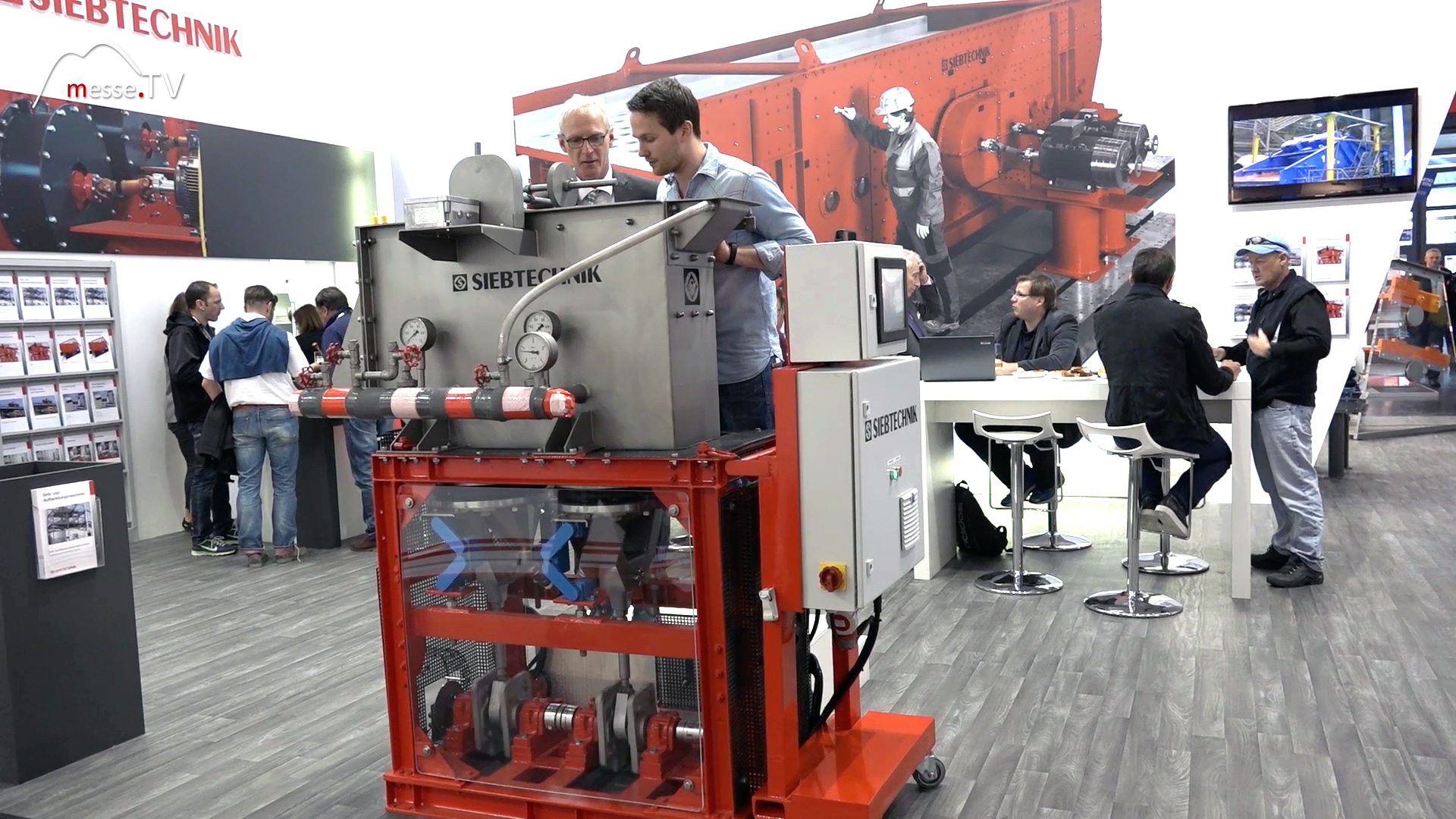
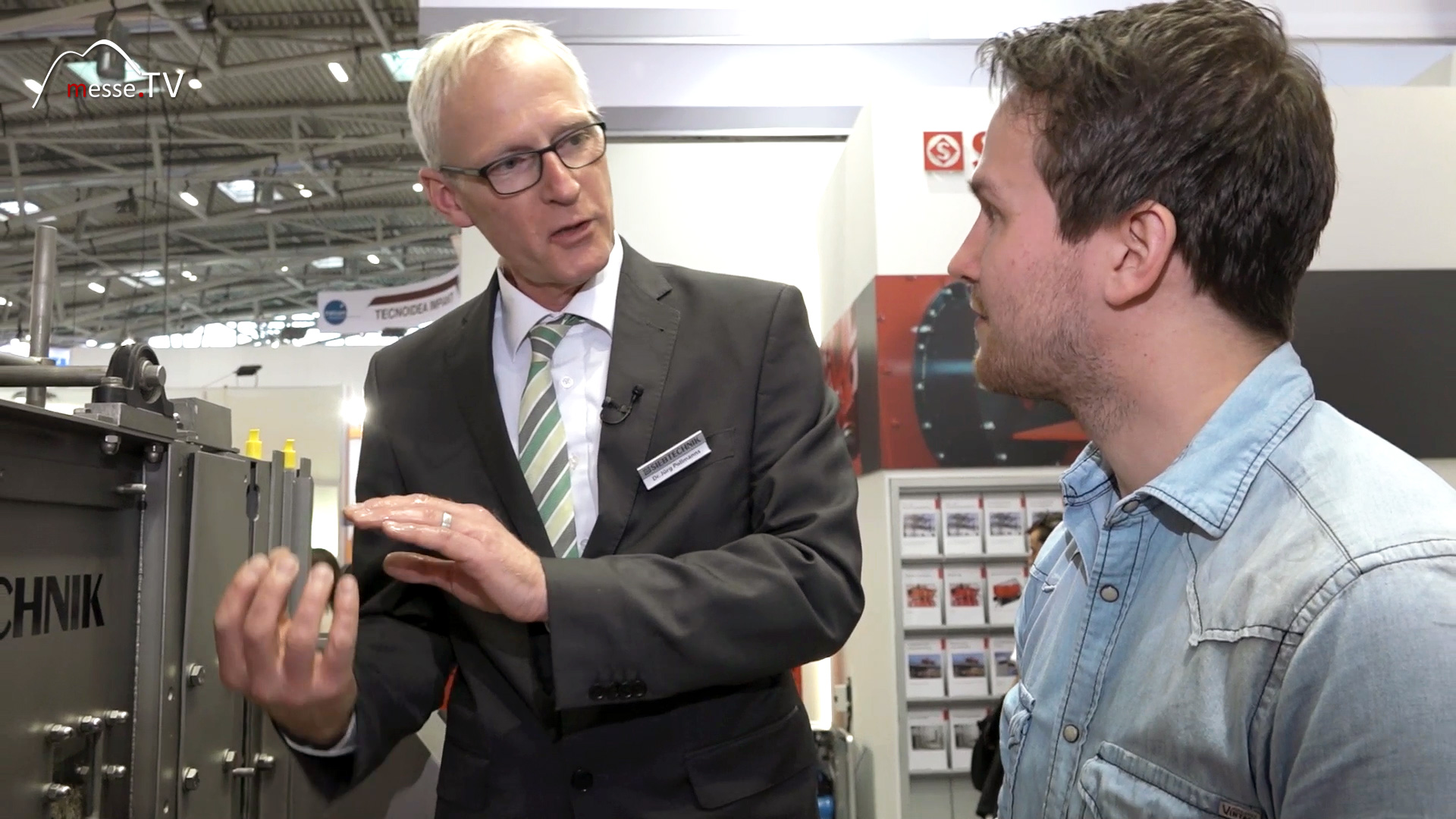
Felix Rother: This is the typesetting machine? Jürg Pollmanns: This is a model of a setting machine. The setting machines we build are normally larger. We only use them in the laboratory. This machine separates light material from heavy material. The heavy material is usually the gravel and the light material can be lignite or wood, which the gravel operator finds in his deposit but doesn't want in his product. Felix Rother: So lignite would be the dark pellets and the light-colored pellets would be the gravel. Jürg Pollmanns: That's already sorted, of course. So the principle is that a pulsating current lifts the material and the material arranges itself according to its density. The light material sinks much more slowly than the heavy material and therefore stratification takes place according to density. Felix Rother: Can we perhaps mix this again so that we can see how the whole thing works, so that we can follow it? Jürg Pollmanns: We are happy to do that. Felix Rother: Can you just reach in there? Jürg Pollmanns: You can just reach in there, nothing happens. (Mr. Pollmanns reaches his arm into the machine filled with water to mix lignite and gravel) I'll just get it all back to the beginning. The machine continues to run diligently. And now watch how the light parts all march to the top. Felix Rother: Exactly, they move up and over. (Points to the right-hand viewing window) That means we've already organized it here. Jürg Pollmanns: Yes, all the material moves over there (from left to right) because here (on the left) is of course a trigger, the whole thing is of course a continuous machine in reality. Felix Rother: Okay, sure, so there's always material coming in.
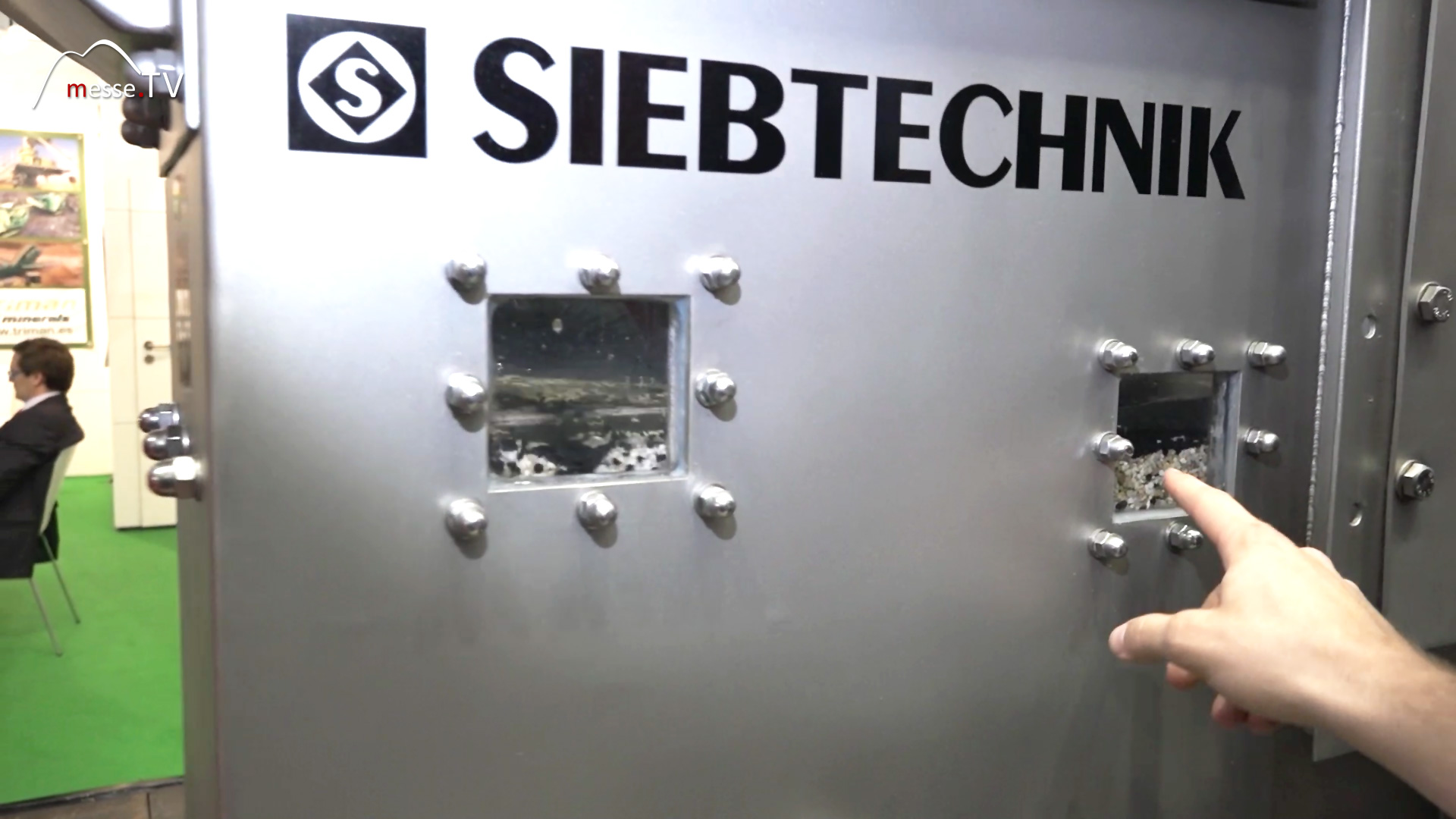
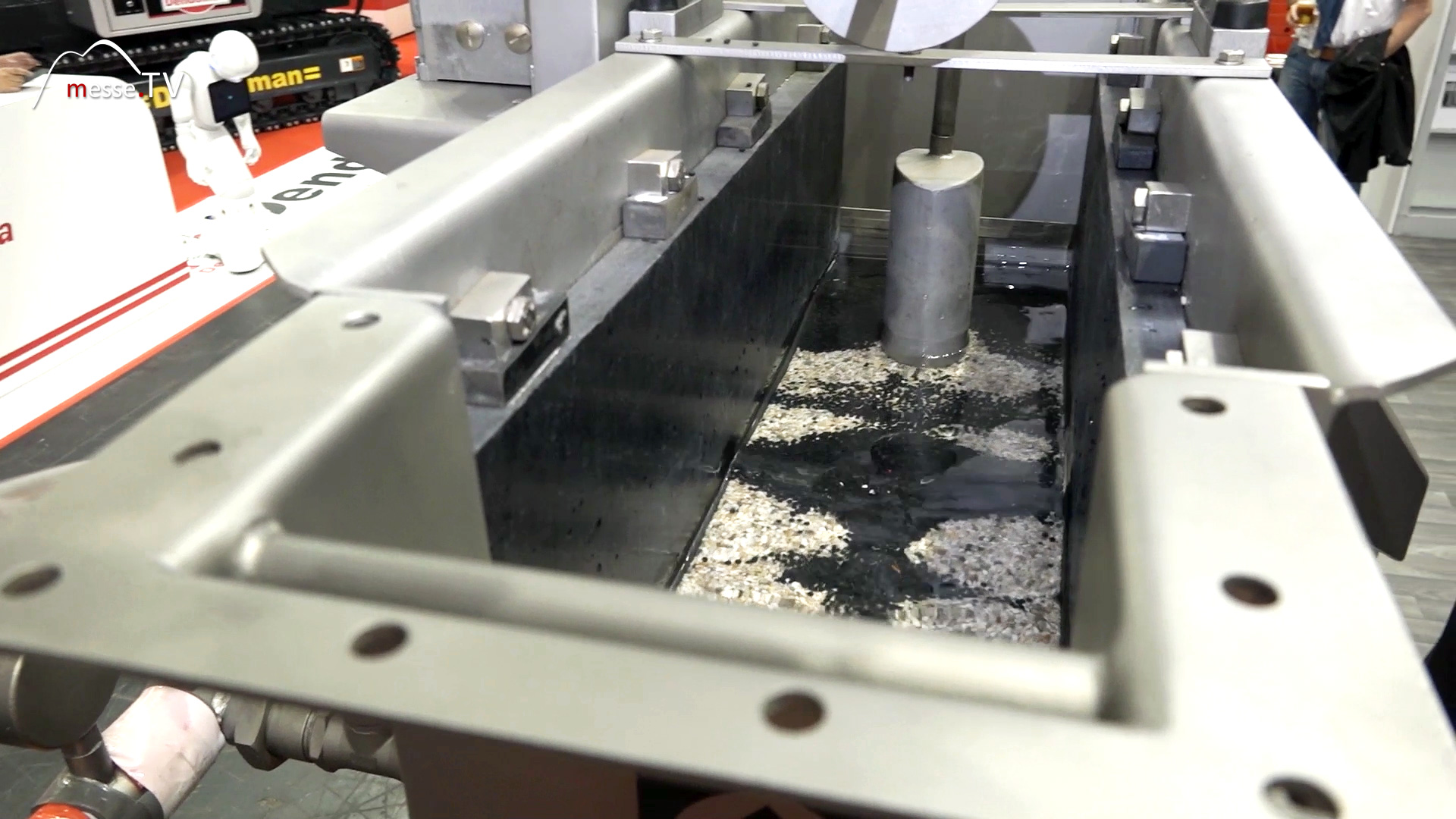
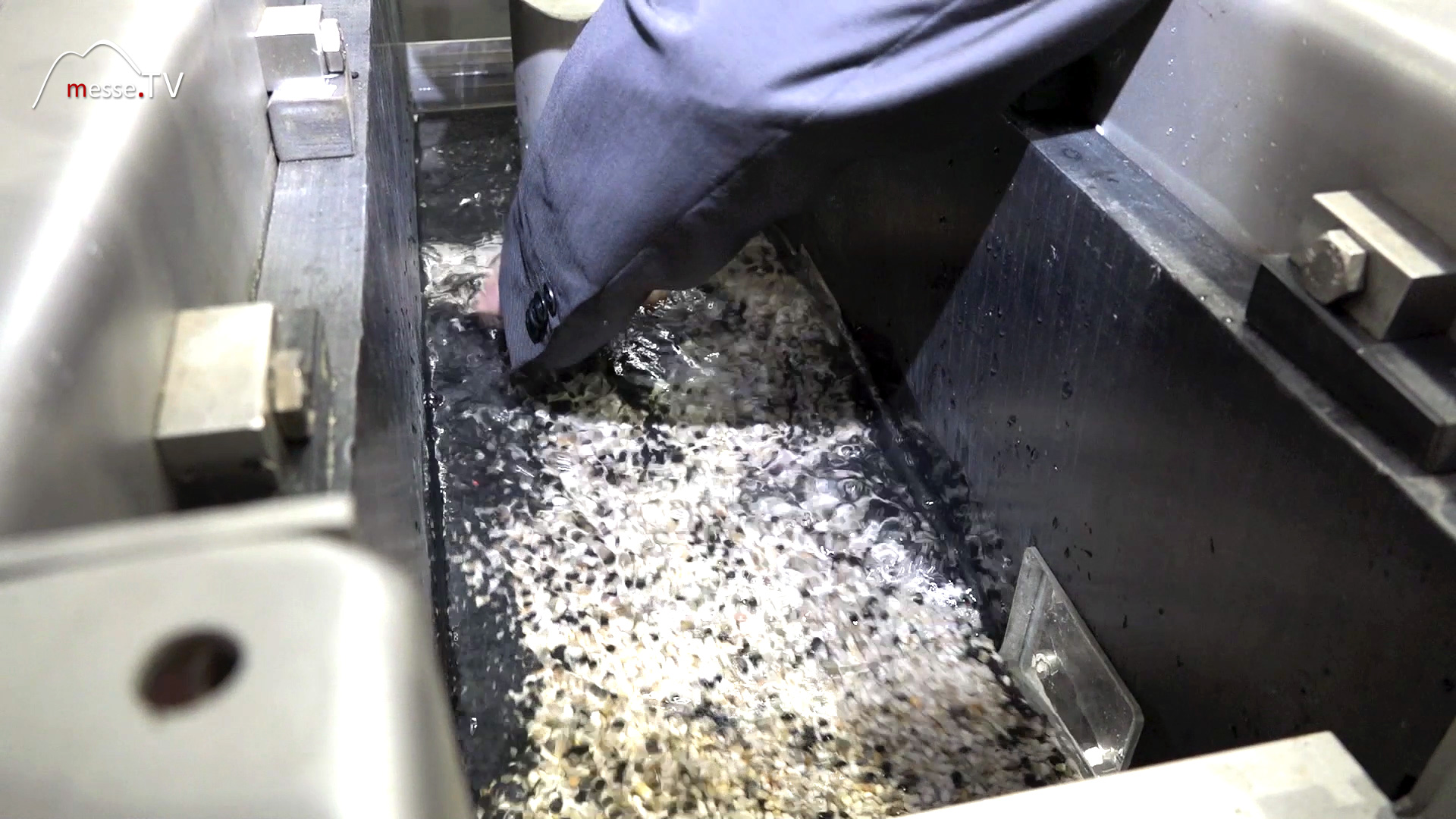
Jürg Pollmanns: The light material is then removed here, flows to the side and the heavy material flows under the light material channel, frontally to the machine outside. Felix Rother: Strictly speaking, that means we also have a screen here, but one that you wouldn't imagine at home. Jürg Pollmanns: The sieve actually only serves as a separating surface to allow the water to pass through and to keep the grains in a certain layer, otherwise it would all fall down. Felix Rother: That means we can separate large stones from small stones over there. We can separate wood and coal from gravel here. Is it possible to separate small needles from large needles at some point, or where can we go with screening technology? Jürg Pollmanns: In principle, that is possible. Anything that can be sieved can also be sieved if you come up with the right application. Nobody has asked me about the application yet, but theoretically it would be possible. Felix Rother: So what's the next development for you, what's on the agenda? Jürg Pollmanns: Well, we often have problems in the aggregate industry where you want to screen out long grains, so you have to come up with special screening surfaces and special screening processes. This is currently the next step in screening technology and you really have to pull out all the stops. So a combination like in an elliptical machine (pointing to the vibrating machine presented first) as we discussed earlier with special screening surfaces to meet this requirement. That would be a prospect. Felix Rother: Then I wish you every success in continuing to meet these requirements and thank you very much. Jürg Pollmanns: Yes, you're welcome. Thank you.